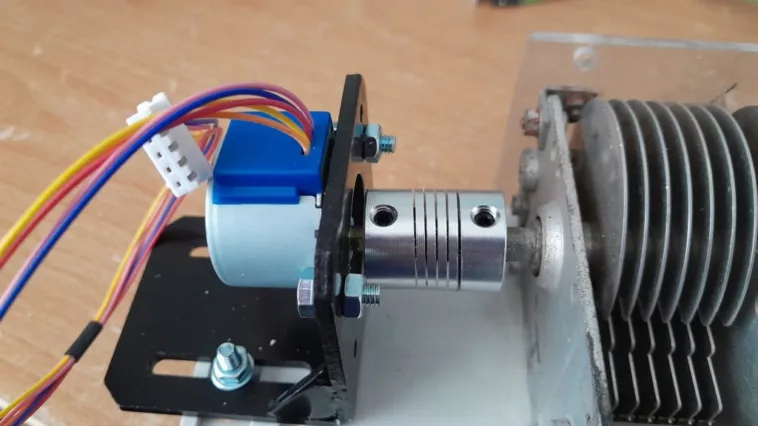
Ham radio allows for the broadcast and reception of non-commercial radio signals across vast distances with relatively inexpensive equipment. As the name implies, ham radio relies on antennas to function, and most designs can take up large amounts of space. An alternative antenna is the magnetic loop design which has a tall circle of copper tubing around the outside while each end is soldered onto a variable capacitor that is used to tune the signal.
TekMakerUK was inspired by Kevin Loughin’s YouTube video on the design and decided to make his own experimental version capable of 5W transmissions, which he could tune via an Android phone. The variable capacitor is from an old valve radio and has a central shaft that rotates to adjust the distance between the dielectric plates. In order to turn the coupling, a 5V stepper motor was added to the base along with a ULN2003 stepper motor driver. The driver was then connected to an Arduino Uno, although the board was replaced by a Nano Every for soldered connections.
In terms of usage, there is a digital encoder that increments the count either up or down depending on the direction it is rotated in, and this dictates how far the stepper should move. Calibrating the “zero” or home position is done by slowly moving the stepper on initialization until it hits a limit switch. More details about TekMakerUK’s magnetic loop antenna tuner can be found here on Instructables.
The post Building an experimental magnetic loop antenna with a stepper motor and an Arduino appeared first on Arduino Blog.
Website: LINK


